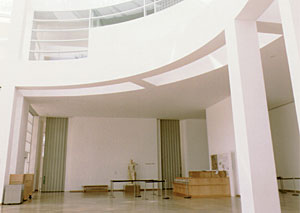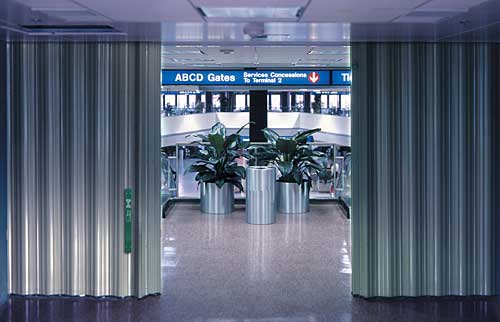Horizontal Sliding Fire Doors: Code-Compliant Design for Wide-Span Opening Protectives
Opening a New Frontier: From Museums to Courthouses
In recent years, design professionals have been turning to horizontal accordion-style sliding door systems in museums, sports arenas, casinos, government facilities, entertainment and shopping venues, airports, and healthcare facilities. The use of the systems satisfies fire and building codes but allows considerable design flexibility. The accordion-style doors retract into wall recesses and hang from a ceiling track when closing, but require no track on the floor. The separation of internal spaces, the design of corridors leading to atriums and other open areas can thus be seamless and open in ways that were previously not possible.
|
Frank Gehry, FAIA, and his firm, Gehry Partners, LLP, used 10 fire-rated, horizontal accordion-style sliding-door systems in his acclaimed Guggenheim Museum in Bilbao, Spain, creating striking interior views among the interior exhibition spaces. Richard Meier, FAIA, and his firm, Richard Meier & Partners, Architects used 64 sliding-door systems at the J. Paul Getty Museum outside Los Angeles to accomplish a similar unobtrusive design for the collection of antiquities, Impressionist paintings, decorative art, and contemporary photography.
|
Tim Love, principal at the Boston-based architectural firm Utile, Inc., worked on the Getty villa, an extension of the museum that opened in January 2006, while at Machado and Silvetti, Associates, Inc., also based in Boston. Sliding-door solutions are like "invisible fire breaks," he said. When retracted, they are actually hard to notice, allowing free-flowing passage among internal spaces. But they close and serve a critical function in a fire or other emergency.











